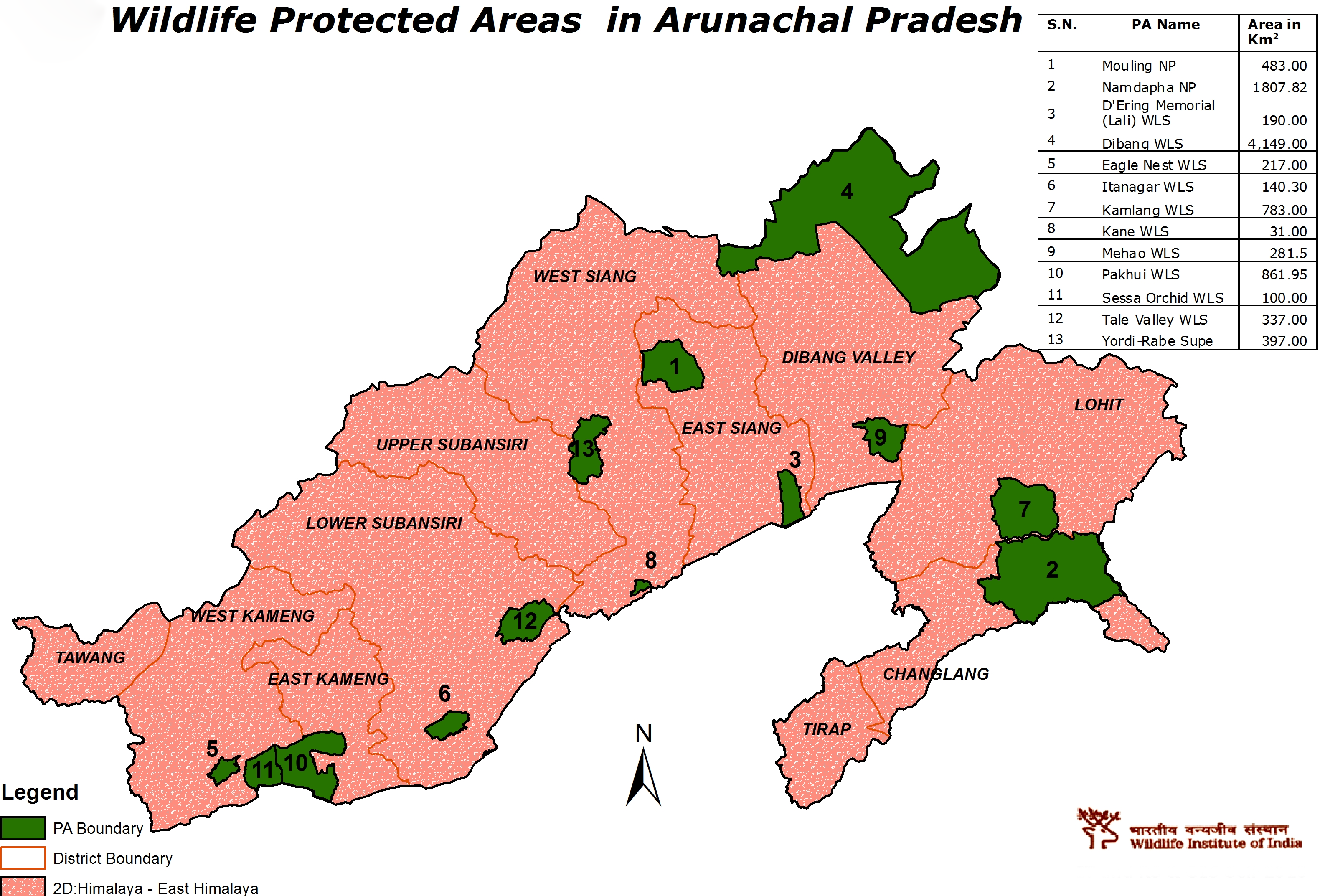Protest of Idu Mishmis over Proposed Tiger Reserve | 11 Apr 2023
Why in News?
Recently, National Tiger Conservation Authority (NTCA) announced that the Dibang Wildlife Sanctuary in Arunachal Pradesh would soon be notified as a tiger reserve.
- This move has caused unrest among the Idu Mishmi tribe who feel that a tiger reserve would “hinder their access” to the forest.
Who are the Idu Mishmis ?
- Idu Mishmi is a sub-tribe of the Mishmi group in Arunachal Pradesh and neighbouring Tibet, primarily living in the Mishmi Hills bordering Tibet.
- Their ancestral homelands are spread over the districts of Dibang Valley and Lower Dibang Valley as well as parts of Upper Siang and Lohit.
- They are known for their weaving and craftsmanship skills and are estimated to comprise around 12,000 people (as per census 2011).
- Their language, also called Idu Mishmi, is considered endangered by UNESCO.
- The tribe has strong ties with the region's rich flora and fauna, and their animist tradition led to unique wildlife conservation practices.
- Tigers are particularly important to the tribe, and according to their mythology, tigers are their elder brothers.
What are the Key Facts about Dibang Wildlife Sanctuary?
- Location: The Dibang Wildlife Sanctuary is located in the northeastern state of Arunachal Pradesh in India.
- The sanctuary is named after the Dibang River, which flows through it.
- Biodiversity hotspot:
- It is considered a biodiversity hotspot and is part of the Eastern Himalayas Endemic Bird Area.
- Flora:
- The sanctuary has a diverse range of flora, including tropical evergreen forests, subtropical broadleaf forests, alpine meadows, and subalpine coniferous forests.
- Some of the important tree species found here include oak, rhododendron, bamboo, and fir.
- Fauna:
- The Sanctuary is home to several rare and endangered species of animals, including the Mishmi takin, musk deer, goral, clouded leopard, snow leopard, and tiger.
- It is also home to several bird species such as the Satyr tragopan, Blyth's tragopan, and Temminck's tragopan.
- People:
- The sanctuary is home to several indigenous communities, such as Idu Mishmi.
- Conservation efforts:
- The Dibang Wildlife Sanctuary was notified in 1998 to protect its rich biodiversity.
- Over the years, several conservation efforts have been undertaken, including mapping the tiger habitat and counting tigers in the area.
- The proposal to declare the sanctuary as a tiger reserve is part of these efforts.
- Threats:
- The Dibang Wildlife Sanctuary is facing several threats, including habitat loss, poaching, and human-wildlife conflict.
- The proposed tiger reserve is expected to provide better protection to the sanctuary's wildlife and their habitat.
What are the Other Protected Areas in Arunachal Pradesh?
- Pakke Wildlife Sanctuary.
- Namdapha National Park
- Mouling National Park
- Kamlang Wildlife Sanctuary.
- Itanagar Wildlife Sanctuary.
- Eagle Nest Wildlife Sanctuary.
UPSC Civil Services Examination, Previous Year Question (PYQ)
Q. Consider the following statements: (2010)
- Biodiversity hotspots are located only in tropical regions.
- India has four biodiversity hotspots i.e., Eastern Himalayas, Western Himalayas, Western Ghats and Andaman and Nicobar Islands.
Which of the statements given above is/are correct?
(a) 1 only
(b) 2 only
(c) Both 1 and 2
(d) Neither 1 nor 2
Ans: (d)
Exp:
- The British biologist Norman Myers coined the term “biodiversity hotspot“ in 1988 as a biogeographic region characterized both by exceptional levels of plant endemism and by serious levels of habitat loss. To qualify as a hotspot, a region must meet two strict criteria – it must contain at least 1,500 species of vascular plants (which is more than 0.5% of the world’s total) as endemics, and it has to have lost at least 70% of its original habitat.
- There are currently 36 recognized biodiversity hotspots. While most of them are in tropical regions, some like Eastern Australian temperate forests, Succulent Karoo (South Africa), etc., are outside tropical regions. Hence, statement 1 is not correct.
- India hosts 4 biodiversity hotspots – the Himalayas, the Western Ghats, the Indo-Burma region and the Sundaland (includes Nicobar group of Islands). Hence, statement 2 is not correct.
- Therefore, option (d) is the correct answer

